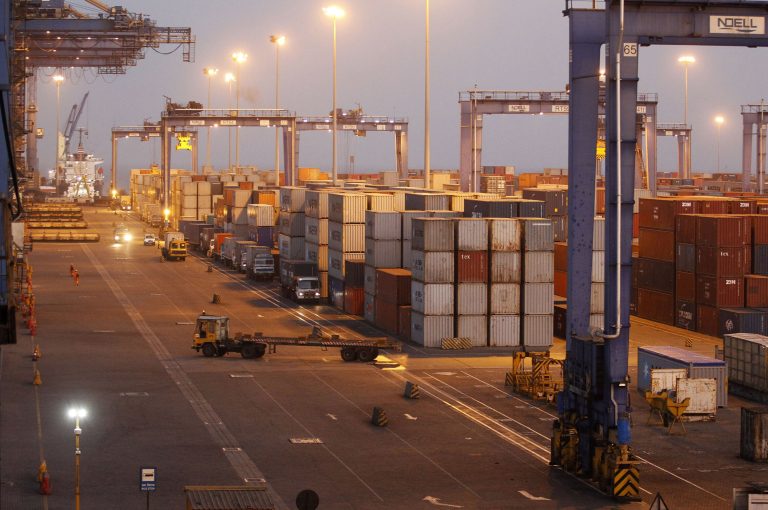News Analysis
Over 8,000 Hong Kong residents reported feeling an earthquake in the early morning hours of March 14. The quake was mild, weighing in at 4.1 on the Richter scale. Some residents reported seeing furniture and a pendant light swaying. Shaking lasted from 2 to 5 seconds, with some residents being jolted from their sleep at 2:28 a.m.
Citizens complained that the Hong Kong Observatory did not announce the quake until 70 minutes after it occurred, which was too slow of a reaction.
The China Earthquakes Network Center (CENC) listed an approximate location, reported in the Hong Kong Standard as having “struck near the coast of Huizhou.” However, this location was 14 miles off, with the actual epicenter, according to the USGS, occurring on land and at a greater depth.
READ MORE:
- Meanwhile In Hong Kong: COVID Cases and Deaths Touch the Sky
- Hong Kong Hospitals Placing Body Bags Under Patients’ Beds as COVID-19 Surges Out of Control
- Wildfire Threatens Large South Korean Nuclear Plant
The Standard reported that CENC said the “epicenter was located near 22.51N, 115.04E, approximately 92 kilometres east-northeast of Hong Kong.” However, USGS reported the quake to have occurred at 22.737N, 114.982E.
Success
You are now signed up for our newsletter
Success
Check your email to complete sign up
The Standard also says the CENC reported that the “quake struck at a depth of 2.5 km,” while USGS has it at 10 km.
If the USGS location is accurate, the epicenter was located just three miles from the Shanwei Haifeng CCS Power Station, a 2100-megawatt coal-fired plant. However, the earthquake was not severe; at that level on the Richter scale, damage to buildings rarely occurs.
According to the Encyclopedia Britannica, earthquakes measuring form 4.0 to 4.9 on the Richter scale are “light” and would be felt by all but would involve only “minor breakage of objects.”
Why this location?
A series of earthquakes occurred along a north-south orientation in the Philippines both before and after the Shanwei quake. It was noted that the western edge of the tectonic plate, known as the Philippine Plate, aligned nearly with these more southerly quakes.
However, the land on which the Shanwei quake occurred is not aligned directly with the plate.
Tectonic plates are not the same as fault lines, but can give rise to faults, which are brittle parts in the lithosphere. A study concluded in 2008 in China identified “at least 495 faults around the country,” including 130 in major cities, 80 of which were determined to be inactive.
Shanwei contains over 2 million people and is a coastal city with mountainous and hilly terrain; it is not known if it was listed among the 130 major cities with active faults. In the absence of active faults, one may wonder what could be making the region unstable.
Beyond fault lines
Fracking has been earmarked as a cause of earthquakes in China. As of 2013, it was noted that China’s oil fields were drying up. At that time, a worldwide trend towards fracking was occurring, and China was included.
The region near Hong Kong is noted for the Jintang oil shales and the Yangjiao oil shales of the Maoming Basin. However, the quake occurred on the far side of Hong Kong, relative to this known Eocene period deposit.
Earthquakes induced by human activity other than fracking can occur as a result of wastewater disposal related to oil drilling.
China’s hydrocarbon industry is known to be actively exploiting the Northern South China Sea, off the coast of Guangdong Province. A major concern is underwater landslides related to a deep offshore area near Hong Kong called the Baiyun Depression.
It is thought that underwater slides generated in that area could cause catastrophic tsunamis. This area is located offshore from the mouth of the Pearl River. Seismic activity in the area may make this region more unstable.
Political tremors
On the 24th and the 25th of February 2019, earthquakes with a magnitude of over four hit Rongxian in Sichuan Province near the city of Zigong. Numerous buildings were damaged, 12 injuries were reported, and two fatalities occurred as a result of the quakes.
The local government reported that approximately 3,000 people gathered to protest local shale gas extraction, which the crowds blamed for the earthquakes. On the 25th, the government instructed shale gas companies to suspend temporarily in the region for “earthquake safety.”
Extraction was suspended and had not been resumed by the first week of April of that year, according to reports.
Sichuan has been the location of devastating earthquakes. If China is attempting to greatly increase oil and gas production, due to sensitivity, shale fields far from Sichuan may be more appealing than those in the earthquake-ridden province.
It is unknown if the Maoming Basin holds the nearest shale deposits to Shanwei, which is in a mountainous coastal region in Guangzhou near Hong Kong, or if there is present activity in that area.
The Maoming Basin is approximately 280 miles from the epicenter, which is too far for shale extraction to have affected the area, but it may hint at similar morphology in the Shanwei region that is being exploited. This, however, is unsubstantiated with present research.
Why the discrepancy of reports of the quake 14 miles to the north and 7.5 miles deeper has occurred is a matter of conjecture at this point. It is unknown whether there would be a reason to make a quake seem as if it had struck offshore instead of on land.
The question would be, is it merely a casual estimate, or is there intentional discrepancy in the report in order to place the epicenter offshore, and what, if anything, does it indicate is occurring beneath the surface?







